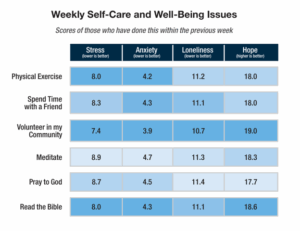
DALLAS (BP)–You’d think a guy who just finished overseeing a Bible translation from its original languages into English would wipe his brow in relief.
But not Ed Blum, general editor of the Holman Christian Standard Bible.
“It’s always exciting to see something in print, but I’m not relieved yet,” said Blum, who led a team of 100 scholars in translating the Holman CSB into modern English from the original languages of Greek, Hebrew and Aramaic.
“The work is never completely over,” he said, referring to the 200-plus Bible products that will emerge in the next few years from the new translation.
The Holman CSB was released in its entirety in April through Broadman & Holman Publishers, the trade book division of LifeWay Christian Resources of the Southern Baptist Convention.
Blum’s overarching goal in leading the translation committee was to produce the most accurate and readable Bible ever — a painstaking process that began 20 years ago.
“For the Old Testament, we used 40 scholars and they did a basic translation,” said Blum, who holds a master’s and doctorate in theology from Dallas Theological Seminary and a Ph.D. from the University of Basel, Switzerland, and has done post-doctoral studies at Rice University in Houston. “The basic translation was then sent to four Hebrew editors who made their notations on the copy.”
Those editors, then, sent the translation to Dallas, where Blum and a team of 10 scholars, linguists and English grammar experts finished each book of the Bible. “We did a second, third, fourth and fifth draft until we got the translation to a place where we thought it was publishable.”
Blum said when the translation team worked on the Gospel of John in 1998 — the first book released to the public — “we went over every single word in the book 21 times, in Greek and English.”
Because of this attention to detail, the lean, silver-haired general editor says the Holman CSB merits top marks for accuracy. And boldness.
“One word most striking in the Holman CSB that no other translation uses regularly is the translation of the Greek word ‘slave,’” Blum said. “In Romans 1:1, Paul is called a slave of Jesus Christ.”
Most translations forego the word “slave” for cultural reasons, Blum said. Instead, they use the word “servant.” But because of the Holman CSB’s goal of accuracy, translators stayed true to the original meaning of the word.
“The dictionary defines a servant as someone who serves and is paid. A slave is someone who is owned,” Blum said. “The Bible says you are not your own; you are bought with a price. When Paul says he is a slave of Jesus Christ, he means, ‘I have been bought, and I belong to Jesus.’”
Blum said the Holman CSB’s allegiance to accuracy even spills over into the footnotes.
“Look here,” Blum said, pointing excitedly to the Bible’s “bullet notes” as an example. “Some words (foreign, geographical, cultural or ancient) have bullet points the first time they are used in each chapter. They are then listed in alphabetical order at the back of the Bible.”
“Another goal of the Holman CSB is to provide English-speaking people across the world — not just Southern Baptists in the United States — with an accurate, readable Bible in contemporary English,” Blum said.
Broadman & Holman decided to publish a new translation “because our knowledge keeps increasing,” Blum said. “With computerization, discovery of ancient manuscripts and the change of the English language, it’s time for a new Bible. The Holman CSB is a modern, up-to-date translation that has been the work of a lot of research.”
Blum said the new translation finds a balance between being too literal and too simple. “Some translations take a very literal approach, making them excellent for in-depth study, but difficult to read,” he said. “Other translations are more readable, but with a less literal approach.
“The Holman CSB is in the middle,” he said, describing it as an up-to-date translation derived from the original biblical languages but styled in modern grammar and vocabulary.
Blum emphasized, however, that the Holman CSB avoids oversimplification by retaining (and explaining in footnotes) words like propitiation, redemption, justification and sanctification. “It provides the accuracy of some translations and the readability of others,” he said.
Through the ages, men like William Tyndale (1494-1536) were killed for translating a Bible that could be read by the public. Of course, Blum doesn’t believe he’ll meet an early death because of his work on a fresh, readable, accurate Bible translation.
But he does plan to continue working on the translation until “I’m in the grave.”
“I get up every morning and say, ‘I have the greatest job in the world.’ I mean, how many people get to spend their whole lives working on Scripture?”
–30–
(BP) photo posted in the BP Photo Library at https://www.bpnews.net. Photo title: ED BLUM.
















